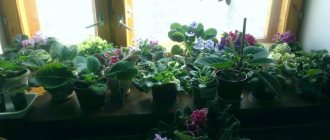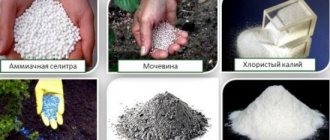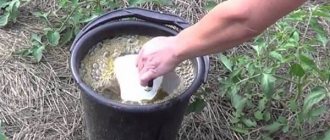Many lovers of natural coffee throw it away with the trash. However, it is known that coffee grounds are very often used as fertilizer: for which plants it will be written below. It is for this reason that it is worth drying it on the windowsill after use, so that you can then fertilize some indoor plants with it. That is why modern experts recommend using it. Please note that only dried grounds are suitable for flowers. Regular ground coffee is not suitable for this purpose, as it has high acidity. Here's how to properly use coffee grounds to fertilize your garden and indoor plants.
For which plants is coffee fertilizer suitable?
And yet, sleeping coffee is a top dressing that is not suitable for every plant. Therefore, before you widely use it in your garden, you need to study for which plants it is most effective to use coffee grounds as a fertilizer. It is most useful for flowers that prefer low pH levels - azaleas, hydrangeas, heathers and rhododendrons. Due to the large amount of potassium in the composition, coffee grounds can be used as a fertilizer when growing vegetable crops, such as tomatoes, potatoes, cucumbers, and peppers. Feeding fruit trees with dormant coffee will also help to significantly increase their fruiting. Magnesium contained in coffee is beneficial for berry bushes. Magnesium and potassium will help you get a high yield of root crops, while nitrogen is indispensable for green crops.
Among house plants, roses, palm trees, ficuses and ferns, as well as violets and asparagus respond best to coffee fertilizing. When using coffee grounds as fertilizer for indoor plants, it is recommended to first drain and dry them. If you simply pour the remains of coffee from a cup into the pot, most likely there will be no benefit, but on the contrary, the soil may become crusty and begin to mold. To prevent this, you need to mix the prepared grounds with soil suitable for this type of plant.
Coffee with sugar or milk should not be used to feed garden, vegetable and flower crops, since sugar attracts ants, and milk provokes the development of putrefactive processes in the soil, which can harm the root system of plants.
What flowers “love” coffee grounds:
- cacti. However, you need to not overdo it, so as not to burn the roots of the plant. In moderation, coffee grounds allow
- the cactus develops well;
- hydrangeas. The second plant that loves coffee very much. However, the color of the inflorescences may change in some situations;
- azaleas;
- fuchsia;
- ferns;
- anthuriums;
- roses;
- mock orange;
- bush roses, especially yellow ones.
Experts write that coffee grounds are suitable for any plant. However, here you need to follow the correct dosage and not overuse coffee. Some plants like to have a lot of grounds. Others, on the contrary, do not really need it. A small amount is enough for the plant to receive sufficient nutrition. It is better to underfeed than to overfeed, as there is a danger of burning the roots. Therefore, coffee grounds are used in doses and very carefully when feeding indoor and garden plants.
If you want to know interesting facts about coffee, take a look here.
Irina
Hello, I'm Irina. I have been a coffee expert for over 15 years. Over the past 6 years, I have tried every coffee there is to try and even opened my own coffee shop. Join me on this journey to learn more about coffee at Pokofemanim.ru
Methods of use
Watering
Before using used coffee as fertilizer when watering plants, it must be diluted in a sufficient amount of liquid. To prepare a solution for 10 liters of water, 1 cup of grounds is required. The cake is poured with a small amount of water and left to swell for about a day. After swelling, the amount of liquid is adjusted to the calculated value and used for watering plants.
After feeding the plants with coffee grounds, it is advisable to water the soil again, but with clean water. This technique will allow the minerals to be slowly released to nourish the plants. When planting bushes, you should spill the soil with coffee solution at the rate of 1 liter per bush.
Mulching
Coffee grounds can also be used to mulch plantings to protect the soil from drying out, repel pests and improve the structure of the soil. However, it must be remembered that when using grounds as mulch, as in the case of using coffee cake as fertilizer in a garden at the dacha, you should dry it thoroughly to prevent the development of mold.
Soil Supplement
Dried ground coffee as a fertilizer can be added to the planting hole or hole before planting to improve the soil structure. This technique makes the soil more drained and loose, which ultimately has a positive effect on the health of the plants and the volume of the harvest. When used on light soils, the grounds act as a binding component. In this case, fertilizing is applied to the top soil layer at the rate of 200 ml per 1 m².
Compost
To speed up the ripening of compost, it is enough to pour coffee infusion on each layer no more than 10 cm thick. Coffee grounds act as nitrogen components that trigger an exothermic reaction inside the compost heap, in other words, heating it up, which makes the compost ripen much faster. This method is so effective that some summer residents specifically purchase inexpensive varieties of ground coffee and sprinkle layers of compost over them.
For seedlings
Recently, the method of growing vegetable seedlings on a coffee substrate has become popular. But in order to prevent soil depletion, it is necessary to feed the seedlings with complex fertilizers from time to time.
Pest protection
Coffee cake as a fertilizer in the garden is also very effective for protecting plants from mature individuals of harmful insects - ants, snails, aphids, slugs. According to the experience of some gardeners, coffee can also destroy pest larvae, in particular mosquitoes and garden bugs. This product is not as effective as insecticides, but it is also much safer.
How to cook?
To get a high-quality result, you must take a responsible approach to the preparation of this fertilizer. It should be noted that when winter begins, it is not necessary to add auxiliary components to the soil of indoor plants, because at this time they are at rest. Therefore, you can start slowly preparing fertilizing, preparing fertilizer during the winter, which will then be applied in the first days of spring.
Coffee grounds
Coffee grounds must be collected after each drink. If you brew a drink in a mug, there will be waste left at the bottom that you don’t need to rush into the trash can. Set aside leftovers in a separate container for several days. After this, it is necessary to dry the grounds in the oven or in another dry place so that the moisture completely evaporates and mold does not affect the future fertilizer.
If you use a coffee machine, the filters along with the waste are also dried, then they can be crushed and used.
As for the cake that remains after processed ground coffee, you need to do several manipulations.
- The raw materials are sent to a dry container that needs to be cleaned. This can be either a plastic bowl or a glass plate.
- To dry, take plain paper on which the waste is folded. It will take some time, but the result will be ready-made fertilizer.
- If you have a summer cottage, coffee residues can be poured into a compost bin, where the organic matter will cook for several weeks.
You can prepare a special composition by taking 50% grounds, 20% dry straw, and a little more foliage that was previously chopped. The ingredients are mixed and sent to a tank or other container where they will rot. It is important to pour soil on top, making holes for oxygen to enter. The fertilizer will be ready in a month, then it is added as food to flower pots.
Where should you not use coffee grounds?
Coffee grounds are rich in nitrogen, so if you use them in excess, you can burn the root system, which will lead to the death of the plant.
Poorly dried coffee waste can cause mold and fungal diseases to develop and kill plants. Additionally, coffee fertilizer is not suitable for tradescantia, asparagus, geraniums and other crops that prefer more alkaline soil. Fertilizing with cake can change the shade of rose flowers.
Types of fertilizers for crops
There are two types of fertilizers:
- organic;
- mineral.
Mineral fertilizers are synthetic fertilizers created by the chemical industry.
There are such feedings:
- complex, containing nitrogen, phosphorus, potassium;
- single-component, for example, nitrogen.
Organic are supplements that are obtained naturally. This can be bird and animal manure, compost, wood ash. There are supporters of both types of fertilizers. The best results come from a reasonable combination of organic and mineral fertilizers.
Useful tips
Dried coffee grounds are very light, so when used dry, the slightest breeze can blow them away from the garden bed. To prevent this from happening, it is recommended to mix the cake with soil or sawdust and plant it shallowly in the soil.
If the color of the leaves of your plants changes after processing the coffee grounds, you should stop using the coffee grounds as fertilizer. You can carefully strain the coffee infusion and use only the liquid for watering, and use the grounds, for example, to feed conifers.
It is recommended to prepare fertilizer from coffee grounds for the garden, using the cake from the preparation of only natural coffee. It is not advisable to use instant powdered and granulated coffee for this purpose, since their nutritional value is not great.
Preparation and preparation of cake from coffee beans
The cake obtained from brewing coffee must be prepared in advance for further use. The procurement of raw materials will begin at the end of autumn in order to accumulate a sufficient amount of mass by spring.
The process of collecting spent coffee is very simple. Each serving of grounds received must be strained through cheesecloth to rid it of mold-causing milk or sugar added to the drink. After this, it is necessary to gradually spread the cake in a layer on parchment paper for subsequent drying.
When all the liquid has completely evaporated from the placed mass, the resulting dry substrate should be poured into any container:
- glass;
- ceramic;
- tin.
Keep the workpiece closed and store the powder in a place protected from light.
Loosen the soil
Residues at the bottom of the coffee maker from coffee beans are an excellent food for flowers. Pour the cake into a bowl and mix a little with the top layer. This method will make the soil looser and lighter. The roots are enriched with oxygen and the structure of the substrate itself is improved.
Also, with this feeding, the process of increasing acidity occurs, which has a beneficial effect on the plant. This procedure is suitable for all crops that grow in the ground. In order to obtain a high-quality substrate before planting, mix a handful of baking powder with 1 kg of soil. For indoor flowers, you can use not only coffee residue, but also tea leaves.
Protect from pests
Tea brewing has the same effect as coffee, but it is better at repelling pests and insects. However, it should be borne in mind that black flies like to breed in it, so this method is recommended to be done in the warm season.
The flower can be taken out into the air, which will dry the soil. Flies don't like this. If the soil is wet and does not really have time to dry out, then you need to get rid of persistent insects using chemicals. In winter, before adding to an indoor flower, it is recommended to dry the tea leaves in advance.
Coffee fertilizer
Many gardeners use the aromatic collection as fertilizer for all plants grown on the site. It is worth noting right away that coffee residues cannot replace complex or other fertilizers.
Indeed, cake contains nitrogen, phosphorus, and calcium, but only in small quantities. And all the elements do not immediately enter the soil, as they decompose very slowly. Therefore, along with coffee cake, it is worth adding other fertilizers.
But to improve the quality of the soil and attract worms, the remains will undoubtedly be very useful. It is worth noting that pouring instant coffee under plants is not recommended, otherwise acidification of the soil will occur.
The use of uncooked ground grains as fertilizer is also not recommended. For fertilizer, only the dried cake after brewing coffee is used.
How to properly prepare coffee for fertilizer?
Preliminary preparation of the cake is mandatory, and it should be understood that it is not ordinary ground coffee that is suitable as a fertilizer for indoor plants.
Having collected the required amount of raw material, it must be distributed on wax paper or tracing paper and dried until it flows.
If you add the cake immediately after making coffee without drying it, mold will appear and fungal diseases will begin to develop. To prevent the powder from being damaged by mold, you can additionally dry it in the oven, then pour it into glass jars with tight lids or paper bags, kneading the pre-formed lumps.
Do not throw away the contents of the coffee machine
The sediment from the coffee machine will also help garden and vegetable plants and repel many pests from the garden. It is effective against slugs, ants, carrot flies, and snails.
If dormant sediment is scattered around plants, it will become a barrier to slugs, ants and snails. And to get rid of aphids, you need to spray all the plants that are covered with a sticky coating. A solution containing coffee will also repel ants that carry this pest.
Coffee grounds are also successfully used against ants. Sprinkle the dried cake on the approaches to the anthill and the insects will leave their homes. Do not cover the approaches too thickly; the ants will already smell an unpleasant odor.
Coffee residues introduced into the soil will also repel the larvae of those insects that eat root crops.
How to prepare the solution: waste, approximately 200 g, pour 0.5 liters of hot water, let it brew for 3-4 hours. Then the bushes of roses, strawberries, cabbage, and carrots are sprayed.
Reduces the risk of rotting
The easiest way to fertilize is to add tea leaves to the compost heap. Tea contains tannins, which activate the decomposition process, and this speeds up the decomposition of the compost. However, this must still be done with caution, since the substances can acidify the flower soil.
Using leftover tea leaves or coffee cake is just an additional nutritional element for home flowers. In order to fully satisfy the plant's need for nutrients, it may be necessary to use other agrochemicals.











